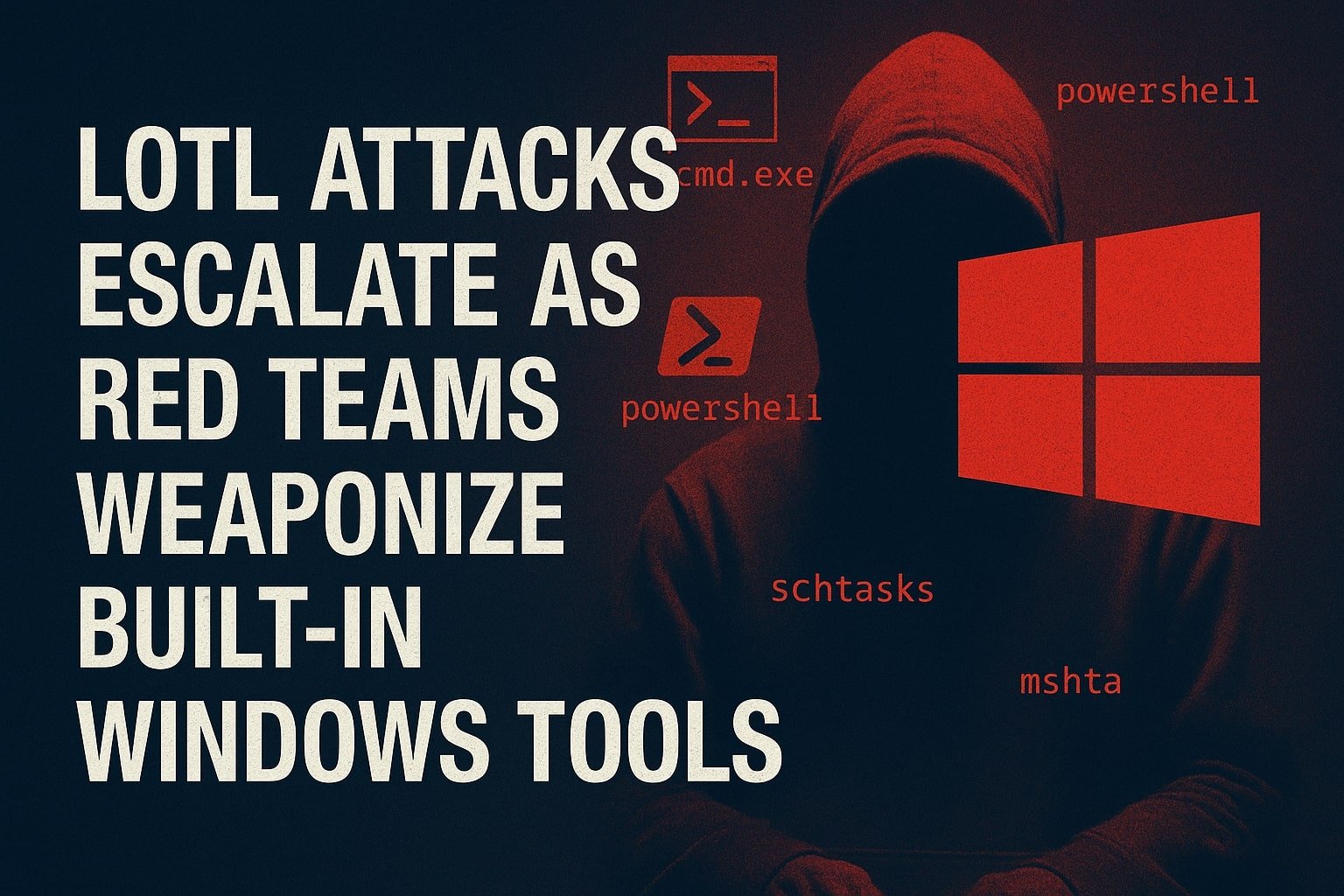A growing number of cyberattacks are being carried out without deploying any external malware by simply using what is already available on the target system. These tactics, known as Living Off The Land (LOTL) attacks, are increasingly being employed by red teams and advanced threat actors alike.
Unlike traditional malware campaigns, LOTL attacks use built-in Windows binaries like PowerShell, WMI, Certutil, and BITSAdmin to blend into normal operations, evade detection, and maintain persistent access. These techniques have been observed in both real-world APT campaigns and simulated red team operations.
From PowerShell to BITSAdmin: The LOTL Arsenal Explained
PowerShell, a default scripting environment on Windows, remains one of the most widely exploited tools. Attackers have been observed using in-memory execution to avoid touching disk, making detection significantly harder. Commands like IEX (New-Object Net.WebClient).DownloadString() have been actively used to run remote scripts undetected.
WMI (Windows Management Instrumentation) is being utilized for both lateral movement and event-triggered persistence, often through CIM sessions and Win32_Process class invocation. WMI event subscriptions have also been weaponized to silently launch payloads at system startup.
Meanwhile, Certutil.exe, a utility meant for managing certificates, has been turned into a covert downloader. Threat actors have also chained it with PowerShell for rapid post-download execution. Similarly, BITSAdmin, Microsoft’s Background Intelligent Transfer Service tool, has been used to create stealthy and persistent download jobs.
Why Traditional Antivirus Fails Against LOTL Techniques
Security experts have raised concerns over the increasing effectiveness of LOTL attacks in bypassing conventional antivirus systems. Because these tools are trusted, signed, and part of the operating system, most endpoint detection solutions struggle to flag them as malicious.
Advanced red teams have also been seen using registry-based persistence, process hollowing, and AMSI/ETW bypasses to further evade monitoring tools. Custom LOTL toolkits, like PowerShell Empire, Cobalt Strike, and Covenant, are enabling red teams to chain multiple LOTL techniques in a single operation.
Case studies involving groups like APT29 (Cozy Bear) and FIN7 have shown how these techniques are being used in active threat campaigns. APT29 has leveraged WMI and cloud services for stealthy command and control, while FIN7 has employed JavaScript, VBScript, and PowerShell to launch persistent attacks from within the OS environment.
Analysts have warned that as defenders improve detection for external malware, attackers are increasingly shifting to internal resources for stealth. Experts recommend behavioral monitoring, advanced PowerShell logging, and YARA-based detection to counter such tactics.
“If it exists on your system, attackers can use it,” a red team lead noted. “And in many cases, they already are.”
About the author – Ayush Chaurasia is a postgraduate student passionate about cybersecurity, threat hunting, and global affairs. He explores the intersection of technology, psychology, national security, and geopolitics through insightful writing



